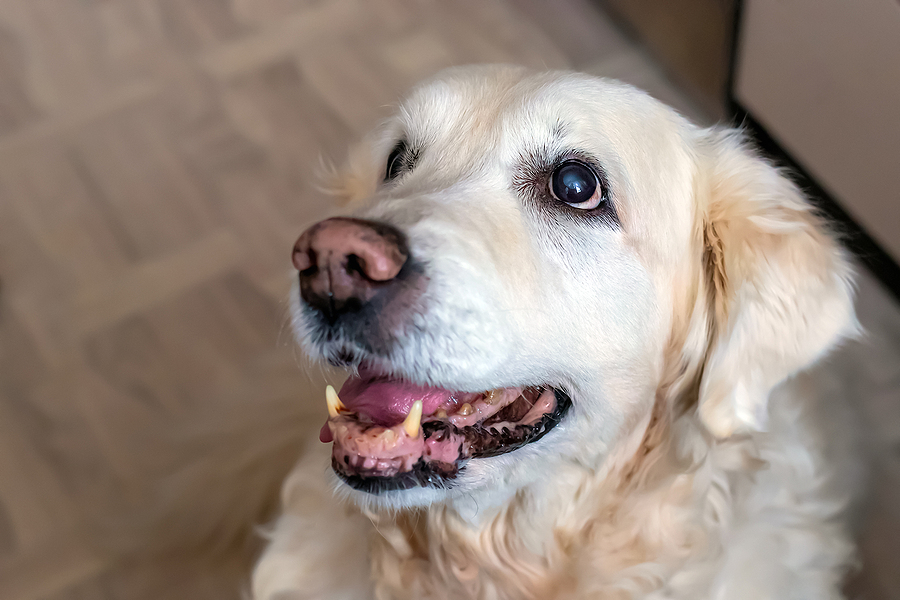My first night of dog training classes is just for the human end of the leash. I want to make sure the people are on board and ready before we introduce dogs into the equation. After a successful registration night, I was going over paperwork when I spotted something out of the ordinary.
“This dog is 11 years old?” I thought. “That has to be a typo.” It wasn’t.
The following week, a couple of senior citizens entered the class, with a beautiful snow-faced Golden Retriever in tow. The trio moving a little stiffly, they made it across the room and took their seats.
“This must be Molly,” I approached. “She’s gorgeous! I have to wonder, why are you taking her to training classes now?”
The man chuckled, “I just retired. Now that I have the time, we wanted something fun to do with our dog.” I melted into a puddle right on the spot. What a wonderful sentiment!
If you’re now wondering how Molly kept up with the crazy teenage hooligans who made up the rest of the class, she excelled. She easily outpaced her classmates, despite having no formal training to that point. Molly’s parents had a ball.
Can You Teach an Old Dog New Tricks?
Absolutely, unequivocally, yes! It is never too late to train your dog. We learn new things throughout our lives, why not our canine friends?
Senior dogs boast something their puppy counterparts have yet to develop: attention spans! A typical puppy is distracted by everything that moves and some things that don’t. It’s best to work with them in short sessions to keep them engaged. With seniors, this is not as much of an issue. You will be able to get more repetitions of behaviors in each session, because your senior is willing to engage with you longer. As a result, you can often see faster progress than with a youngster.
There are some challenges you need to consider when training your senior dog. Foremost is health. If your elderly hound suffers from arthritis or other orthopedic issues, choose behaviors that are gentle on his bones. He may have been able to learn “sit pretty” as a pup, but that same position now could cause him pain. Always consult your veterinarian to ensure your dog is physically sound for training.
Keep in mind that when you use Fear Free training techniques, your senior dog is much more likely to be able to participate. Since Fear Free trainers do not use harsh training tools, such as prong collars or choke chains, you will not risk causing injury in the name of teaching manners.
Another consideration, especially if you are training to address a behavioral issue, is the amount of time your senior dog has been practicing that unwanted behavior. Has he barked at the mailman for 12 years? That’s a strong habit by now. It will take time to teach him a new habit. One of the advantages of training young puppies is that you can stop unwanted behaviors before they grow stronger. So be patient with your senior dog if you’re trying to change unwanted behavior.
A Practical Lesson
Physical considerations aside, you can teach your older dog the same things you would teach a puppy. Common basic behaviors include coming when called, sit, down, stay, walking nicely on leash, and go to place. All of these are a good place to start, but why not teach something fun and practical, too?
As dogs age, they can develop orthopedic issues that make jumping up and down extra stressful on their spines and joints. You can teach your older dog how to go up and down pet stairs to get up on a couch or a bed.
Choose steps that are sturdy enough for your pet, preferably non-skid. Firm foam ones, just a couple of steps high, are fairly easy to find. Place the stairs up against your couch. Put a treat in the middle of the lowest stair, right at the front edge, and encourage your dog to eat it. Put a treat in the middle of the second step and encourage your dog to stretch or step up to get it. Repeat for all stairs until your dog has gone up all the stairs and onto your couch.
Repeat the exercise in reverse to help teach your dog go down the stairs. Be sure to guide your dog if necessary to avoid them jumping off the stairs altogether. Note that some dogs find it scarier to go down, so this may take more time before they get comfortable.
Whatever you decide to teach your senior dog, whether it’s a formal heel or a high five, it will be something fun you can do together. My sweet student Molly has since passed on, but I still grin at the memory of her snow-faced Golden smile as she left all those whippersnapper pups in her wake.
This article was reviewed/edited by board-certified veterinary behaviorist Dr. Kenneth Martin and/or veterinary technician specialist in behavior Debbie Martin, LVT.
Teoti Anderson, CPDT-KA, KPA-CTP, is the vice president of A Dog’s Best Friend, located in Ft. Lauderdale, Florida. A professional dog trainer for more than 23 years, she is the author of The Dog Behavior Problem Solver, Dog Fancy Ultimate Guide to Dog Training, Animal Planet Dogs 101 Dog Training, Puppy Care and Training, The Super Simple Guide to Housetraining, Quick & Easy Crate Training, and Your Outta Control Puppy. A popular conference speaker, she has given presentations to pet owners, humane organizations, and fellow trainers across the United States and internationally.
Want to stay in the loop on the latest and greatest in keeping your pet happy and healthy? Sign up for our free newsletter by clicking here!








